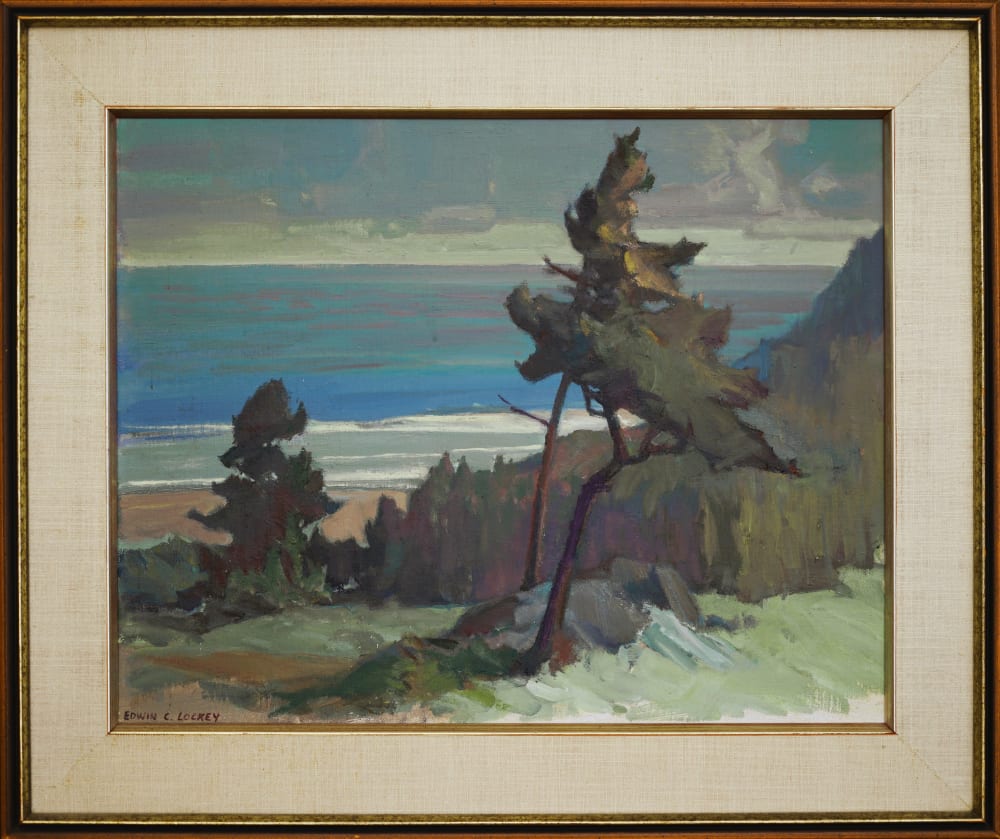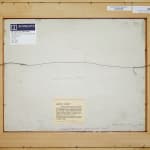-
Artworks
Edwin Lockey English Canadian, 1897-1985
Long Beach, Vancouver Island, BC, c 1940oil on board16 x 20 insigned bottom leftCurrency:Further images
Edwin Lockey’s Long Beach, Vancouver Island, BC (c. 1940) is a striking oil painting that captures the expansive coastal beauty of British Columbia’s rugged Pacific shoreline. The scene is defined...Edwin Lockey’s Long Beach, Vancouver Island, BC (c. 1940) is a striking oil painting that captures the expansive coastal beauty of British Columbia’s rugged Pacific shoreline. The scene is defined by its rhythmic composition—sweeping curves of wet sand, ocean mist hanging in the air, and the soft undulation of distant treelines that fade into the coastal fog. Lockey conveys a deep sense of atmosphere and space, using a muted palette and expressive brushwork that reflects the quiet drama of the West Coast landscape. His treatment of light and air gives the work an immersive quality, inviting viewers to feel the cool salt breeze and the solitude of the open shore.
Long Beach, Vancouver Island is part of the Pacific Rim National Park Reserve, known for its vast sandy shores, dramatic coastal vistas, and ever-changing weather that create a compelling subject for artists. The area’s raw beauty and dynamic atmosphere have inspired many painters, photographers, and writers drawn to its unique combination of ocean, forest, and sky. This natural environment provides a rich backdrop for Lockey’s work, placing him in a tradition of artists who find profound inspiration in the interplay of land, sea, and light on Canada’s West Coast.
His work aligns closely with the themes and sensibilities that defined early 20th-century Canadian art, particularly the focus on nature, national identity, and a deep emotional connection to the land. This approach echoes the core values of artists like Frederick Varley, who spent time in British Columbia capturing the region’s spiritual and atmospheric landscapes, and Lawren Harris, whose later works in Vancouver embodied a more distilled, contemplative vision of the Canadian wilderness. Lockey’s ability to convey mood through restraint and structure also resonates with the legacy of Emily Carr, whose reverent portrayals of the coastal environment elevated the West Coast to national significance. While Lockey may not be as widely recognized, his plein air sensibility and expressive realism reflect these same artistic priorities.
Created around 1940, Long Beach emerges from a period when Canadian artists were turning increasingly westward, drawn to the raw, untamed qualities of the Pacific coast. This painting represents a quieter but no less meaningful contribution to the Canadian landscape tradition, one that honours the elemental forces of sea, sky, and forest. Lockey’s ability to capture the contemplative beauty of Long Beach situates his work within a broader national effort to define and preserve a uniquely Canadian relationship with the natural world.
Long Beach, Vancouver Island, BC, c. 1940, is an oil on board measuring 16 x 20 inches, signed bottom left.
Provenance
- signed and titled on reverse
- from the collection of Dr. Kirsten Skov
- Heffel, Vancouver1of 99






